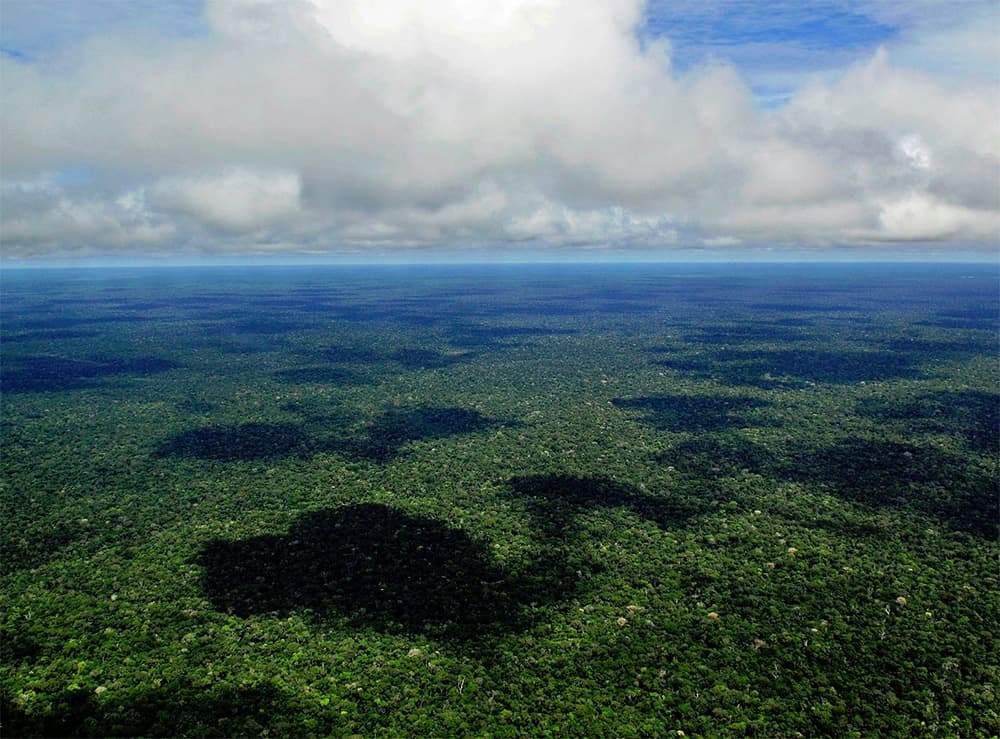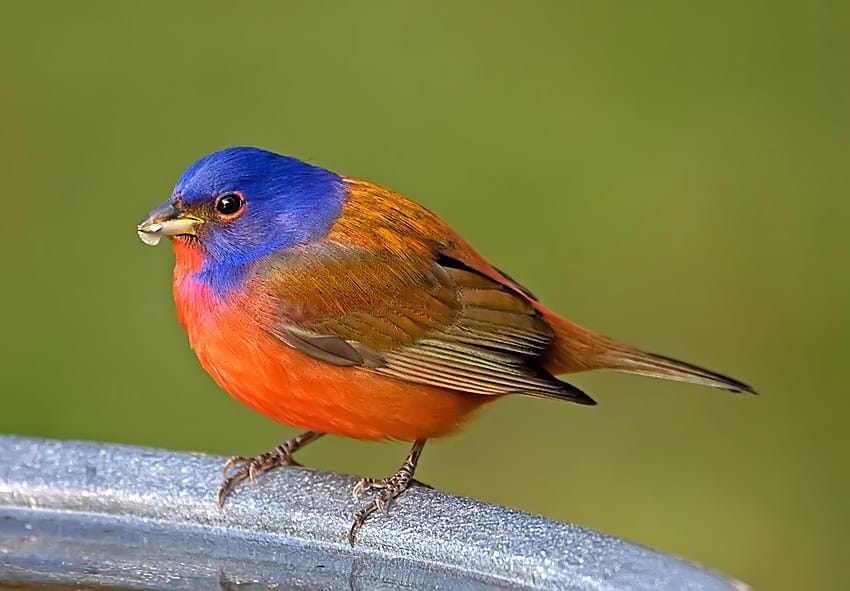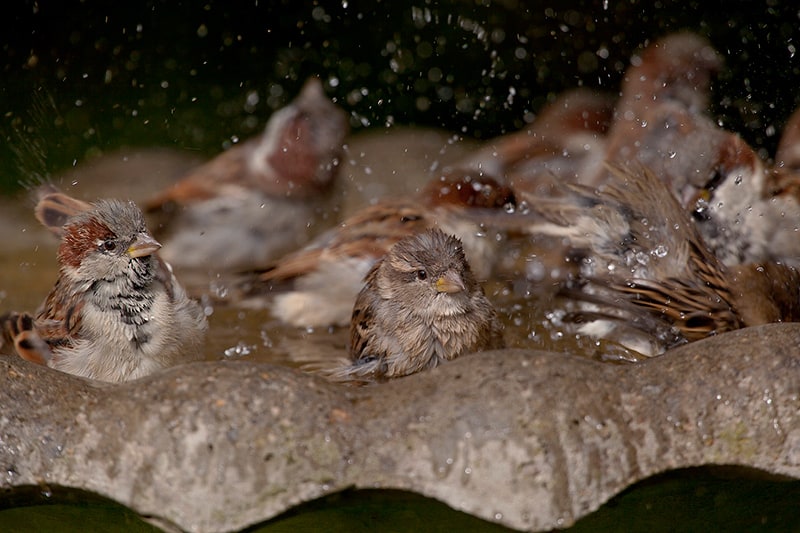In terms of biodiversity, no other wilderness area can compete with the Amazonian Rainforest. Amazonia is the vast region of intricate rainforest found in northern South America. The forests surround the great drainage basins of the Rio Amazonas and its tributaries. Historically, boats traveled the natural “highways” of waterways through the rainforest. Large areas of Brazil remain untouched by all except the indigenous tribes that called this place their home. Roads and farms from the southern areas of Brazil continue to move towards the north, however, bringing loggers, farmers, and ranchers to the newly accessible regions. Among these threatened areas is the region east of the Tapajós River in Pará, Brazil.
It is in these regions that one finds manakins—a truly Neotropical family of birds. These birds can be found in humid primary forests and open woodlands. They rely on the year-round supply of fruit found in this rich habitat.
Manakin courtship displays are fascinating, consisting of interesting dances and rapid flights. These displays have caught the attention of biologists and bird watchers alike. Some of their movements are so quick that they are hard to see with the human eye. The males gather in a display area, known as a lek, and conduct their complex dances to attract females. The dominant male then mates with the visiting females that find his display to their liking. The females then go to their small cup nest, constructed of fine vegetation, fungus and other materials, usually low to the ground in the fork of a branch, to lay eggs and rear the young. Of the 50+ species of manakins found in Amazonia, 35 have been found within Brazil’s borders.
Helmut Sick, studying birds in Pará, described the golden-crowned manakin in 1957. He collected a total of five specimens along the Cururu-ri River, 200 km east of Novo Progresso. These birds are approximately 8-9 cm long, and can be described as short and stocky. The males are green with blackish flight and tail feathers and a glittering greenish-gold crown and nape. Females lack the greenish-gold coloration and have a more consistent green plumage overall.
Two years after Sick described it, this small, green bird with a conspicuous golden crown was officially recognized as a distinct species. Sbsequent attempts to duplicate Sick’s sightings proved unsuccessful, and many feared that this manakin might have been lost as quickly it had been found.
Rediscovery
Fast forward to 2002. José Fernando Pacheco and Fábio Olmos worked as environmental consultants, and had been hired to conduct an environmental impact assessment of the paving of a road known as BR-163. This road is also known as the Cuiabá-Santaré Highway, once just a dirt road that runs from the cities of Cuiabá (in central Brazil) to Santarem, on the southern margin of the Amazon River.
Paving of this 6,000-km road into the Amazon Basin has allowed the expansion of the agricultural frontier by farmers, who access the forested areas in western Pará and then convert the land into pastures. The highway has negatively impacted areas along the roadway with the destruction of the rainforest canopy.
Anywhere the road had been paved, loggers, ranchers, and commercial farmers had cleared the forest of hardwoods, leaving cattle fields and soybean farms. Pacheco and Olmos would have to move fast if they were to find the golden-crowned manakin before the road was paved and the forest destroyed.
Starting on May 8, 2002, these two began to count birds within areas represented by the main vegetation types found before the roads were cut into the forests. The thought of finding the golden-crowned manakin was one of their goals.
The Cuiabá-Santaré Highway was not a well-maintained road, and distances between suitable survey sites were long. Torrential rains from March through June make the dirt highway almost impassable. News that the road was soon to be paved made the surrounding land more valuable. Quick profits from logging, and future rights to new farmlands placed the region in turmoil.
With nearly no law enforcement, people were illegally grabbing land. Well-armed men patrolled the area, and conflict between the newcomers and the indigenous peoples erupted. Visitors, including the survey team, were not always welcomed. This lawless atmosphere would result in several deaths and would stop some of the team from entering known manakin habitat. Luckily for Pacheco and Olmos, most of the serious problems started after their survey was completed.
On May 14 Pacheco was searching for birds along one of the poorly maintained roads. Except for a few mud puddles, the two men could travel without too much trouble—they only got stuck once! Along one of the side roads they spotted a small bird. It had a distinctive yellow crown and was perched just above the ground. After a few seconds, the bird flew off into the forest and disappeared. Later that morning, they had another sighting of what may have been a female golden-crowned manakin. This bird was feeding in a shrub next to a female snow-covered manakin, L. natterei.
The importance of the sightings was not lost on the team. Manakin males like to remain in relatively small areas, near their leks. This would be a good location to set up mist nets and confirm that the golden-crowned manakins were still alive and well. The mist nets captured a mixed group of birds—including an adult male golden-crowned manakin! The 45-year search for the elusive gem was over, but the fight to save the last remaining habitat for the birds had just begun.
Conservation
The announcement by Brazil’s President Luiz Inacio Lula da Siva that the Cuiabá-Santaré Highway would soon be paved did result in deforestation along the roadway,as farmers claimed land. In 2005, after the killing of two U.S. human rights activists, the President created one of the world’s largest environmental protection areas in the Amazon to combat he rising violence and the illegal logging.
The site where the manakin was found in 2002 has since been designated as an 860,000-hector conservation site called Rio Jamanxim. A second protected area to the west of the initial sighting—a National Forest also named Jamanxim—covers 1.3 million hectors, and is probably a more promising site to preserve this wonderful species. The golden-headed manakins were sighted elsewhere as well, in a severely disturbed area of forest at Consórcio Jamanxim in Novo Progresso. Further surveys are still needed to establish a better understanding of the golden-crowned manakin’s range and natural history.
Brazil is near the top of almost every birder’s wish list of places to visit, with more than 1,700 bird species, including almost 200 endemics. Today it is possible to explore the state of Pará, Brazil, with an ever-growing number of tour companies there to help. Your first step may be to grab a copy of Bruce Forrester’s Birding Brazil, a great source of information on where to find birds in an area containing an immense level of bio-diversity!
David Oehler is curator of birds at the Cincinnati Zoo and Botanical Garden. He also founded and operates Feather Link, Inc., a nonprofit organization that connects people and birds through education and conservation. View more info at featherlink.org.




